Disclaimer: This post may contain Amazon affiliate links. Sudachi earns a small percentage from qualifying purchases at no extra cost to you. See disclaimer for more info.
What is Hojicha?
Hojicha (ほうじ茶) is a variant of green tea. Initially derived from bancha or sencha (two types of green tea), hojicha takes on a distinct flavor profile and appearance through high-temperature roasting in a porcelain pot.
This meticulous technique produces a delightful reddish brown tea with a remarkably pleasant and almost nutty taste, complemented by subtle hints of caramel. Like matcha, it can also be ground into a powder and is commonly used to flavor lattes and desserts.
There are generally two main types of hojicha, one made with leaves (ha-hojicha) and another made with stems (bō-hojicha or kuki hojicha). Leaf hojicha is known for its refreshing taste, where as stem hojicha is richer and stronger. If possible, stem hojicha is recommended for cold drinks.
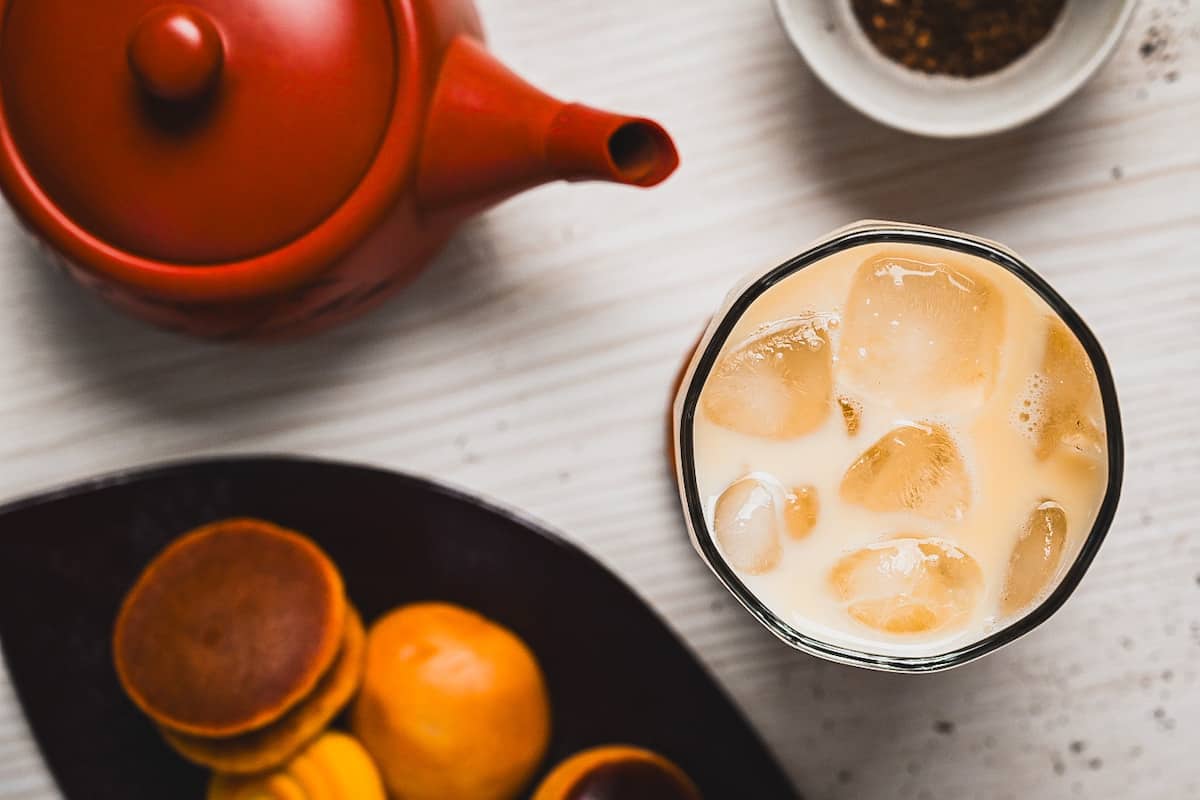
What is the difference between hojicha and green tea
Hojicha is actually categorised into the green tea group. This is because it starts its life as green tea, and changes color and flavor during the roasting process. Because of the high temperatures in which it is roasted, the tannins that contribute to green tea’s bitterness are reduced and the amino acids and sugars in the leaves react to the heat, creating the fragrant aroma of hojicha. Additionally, hojicha is lower in caffeine, making it suitable for an evening beverage.
Here is a chart to show the key differences between hojicha and other green teas:
| Hojicha | Green Tea | |
| Color when brewed | Amber / brown | Yellow / green |
| Flavor | Smooth, nutty, smokey | Refreshing, bitter |
| Smell | Fragrant, soothing | Bright, grassy |
| Production technique | Steamed, dried, roasted | Steamed and dried |
| Caffeine content | Low | High |
Five common types of green tea in Japan are:
- Matcha (抹茶): Young green tea leaves slowly ground with stone mill to create a powder.
- Gyokuro (玉露): A high grade tea made by shielding the leaves from the sun for about 20 days before picking.
- Sencha(煎茶): Green tea made from the first leaves of the harvest. The most common green tea (ryokucha) in Japan.
- Bancha (番茶): Green tea made from the leaves of the second, third and fourth harvest. The cheapest form of green tea with quite a strong bitterness.
- Hojicha (ほうじ茶): Generally a roasted version of Sencha or Bancha.
There are actually around 20 different types of green tea in Japan and vary based on age of the leaves, production method and location in which it was grown. Hojicha is most commonly made with bancha, since it’s the lowest grade of tea, however hojicha made with sencha also exists.
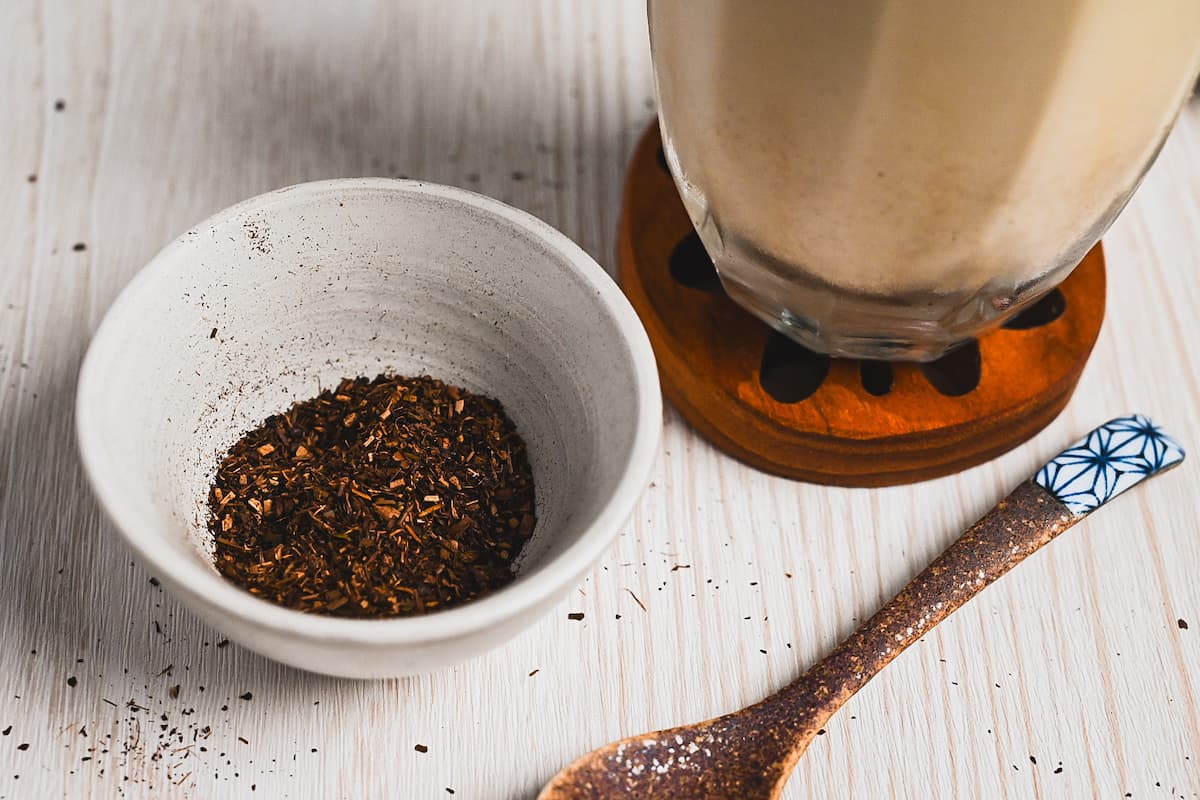
Ingredients Ideas
- Hojicha – the key ingredient of course! I personally use teabags for convenience, but loose tea and powder also work if you prefer. For the best flavor, I also recommend using double the amount you’d use for a hot drink.
- Milk of your choice – I find that the subtle flavor of hojicha is best highlighted when combined with cow’s milk, almond milk or oat milk. But of course, feel free to use your favorite kind of milk!
- Hot water – Boiled to about 80-90°C (176-194°F), the ideal temperature for steeping hojicha.
- Sweetener of choice – I like to use a mixture of honey and light brown sugar.
- Ice – if you hate watering down your drinks, try freezing a tray of brewed hojicha instead!
Iced hojicha latte tastes great on its own, but if you want to take it up a level, maybe you can try one of these additions:
- Whipped cream
- Tapioca pearls
- Hojicha powder sprinkled on top
Curious about the exact brands and products that bring my recipes to life? Discover the brands and ingredients behind my recipes at the Sudachi Amazon Storefront. Explore my handpicked pantry essentials and find your next kitchen favorites!
Jump to Full Recipe Measurements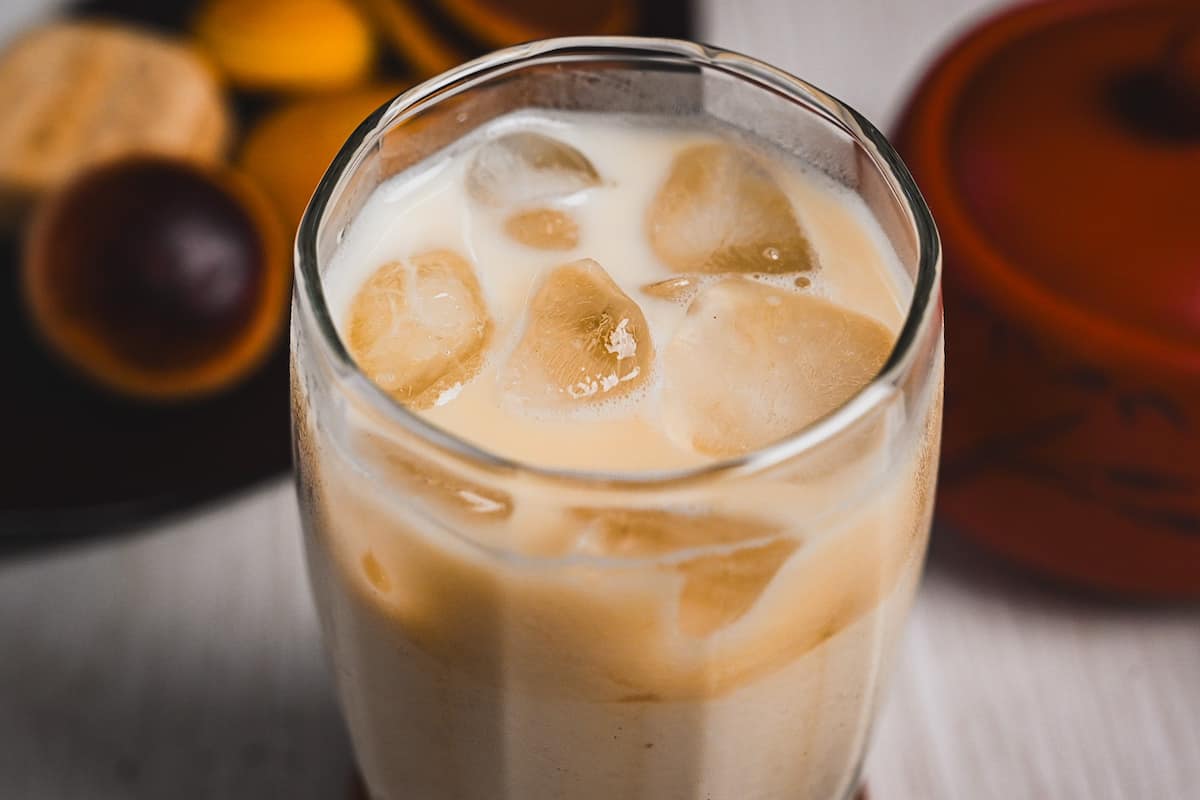
Visual Walkthrough & Tips
Here are my step-by-step instructions for how to make Iced Hojicha Latte at home. For ingredient quantities and simplified instructions, scroll down for the Printable Recipe Card below.
Heat your water to around 90°C (194°F) and pour it over the hojicha tea bags. If using loose leaf tea, add it to the bowl loose and strain later for maximum flavor (using a tea strainer early will make it difficult to submerge the tea since only a small amount of water is used.)
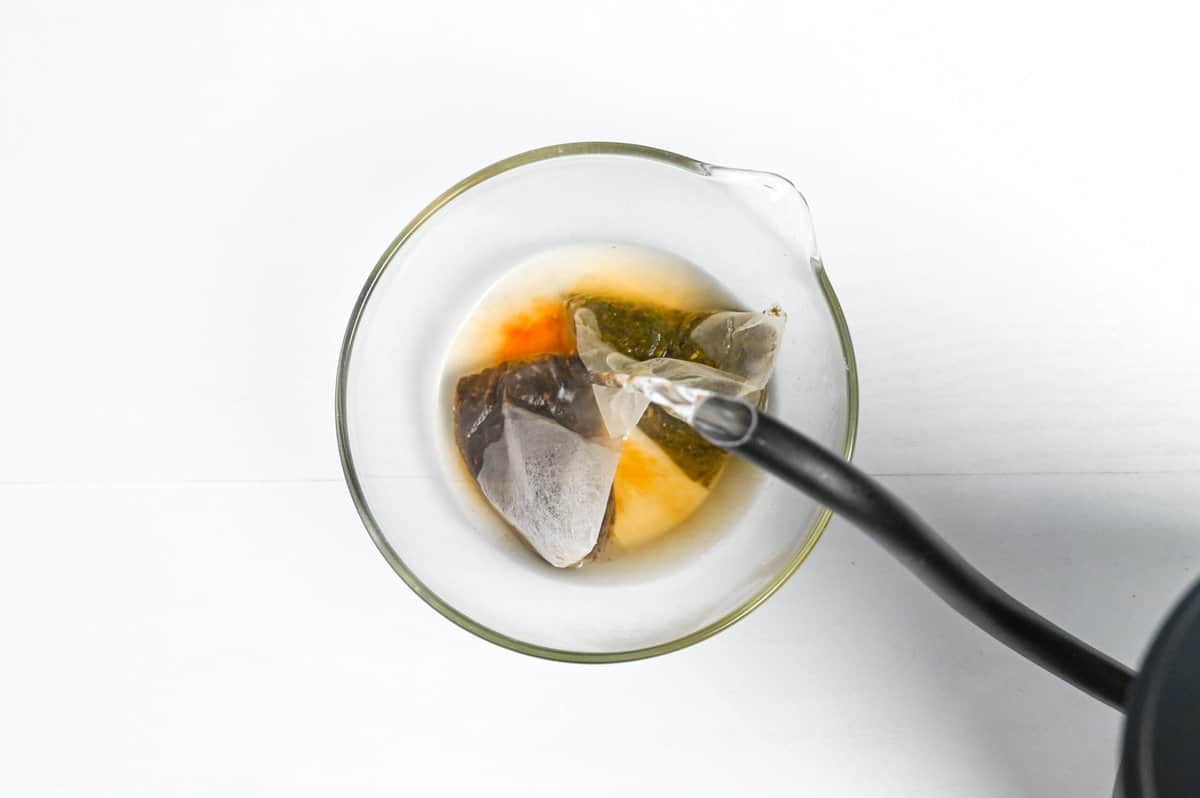
Add the sweetener of your choice to the bowl.
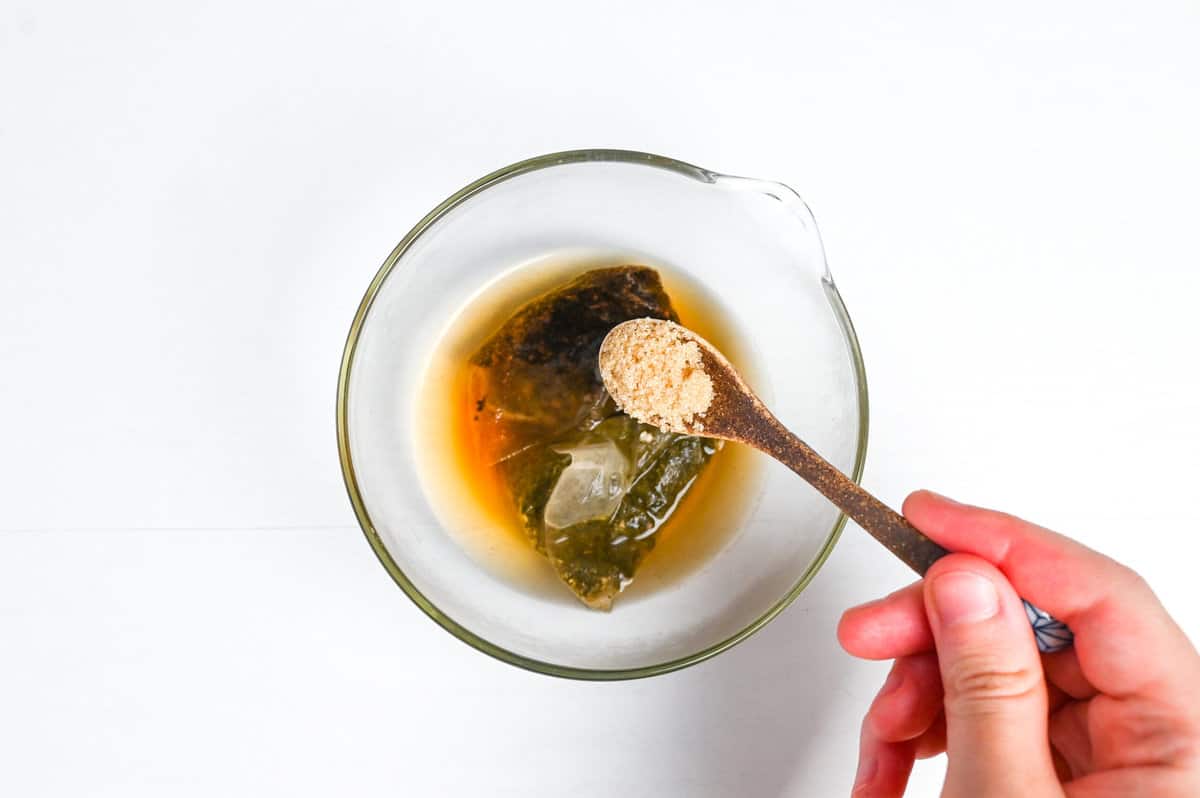
Stir until the sweetener has fully dissolved into the mixture.
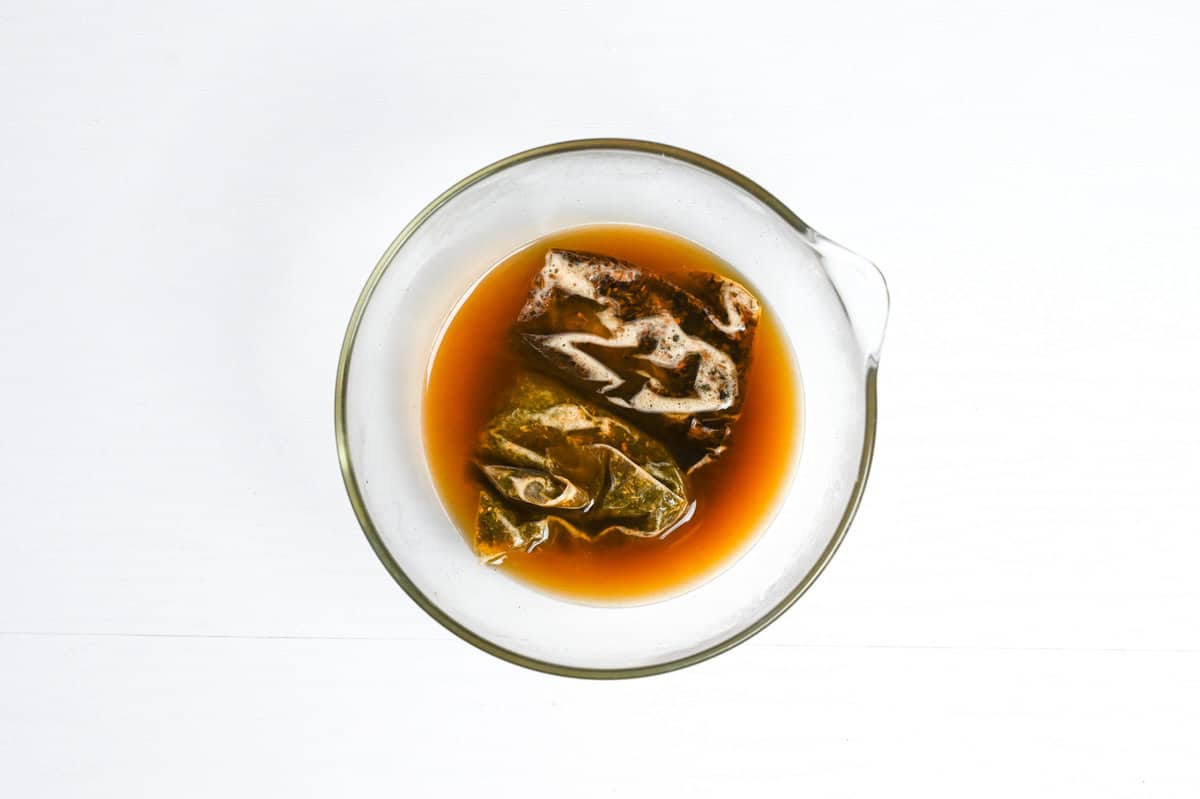
Cover the bowl with plastic wrap (or a small plate if you don’t want to waste plastic) and leave the tea to steep for 10 minutes.
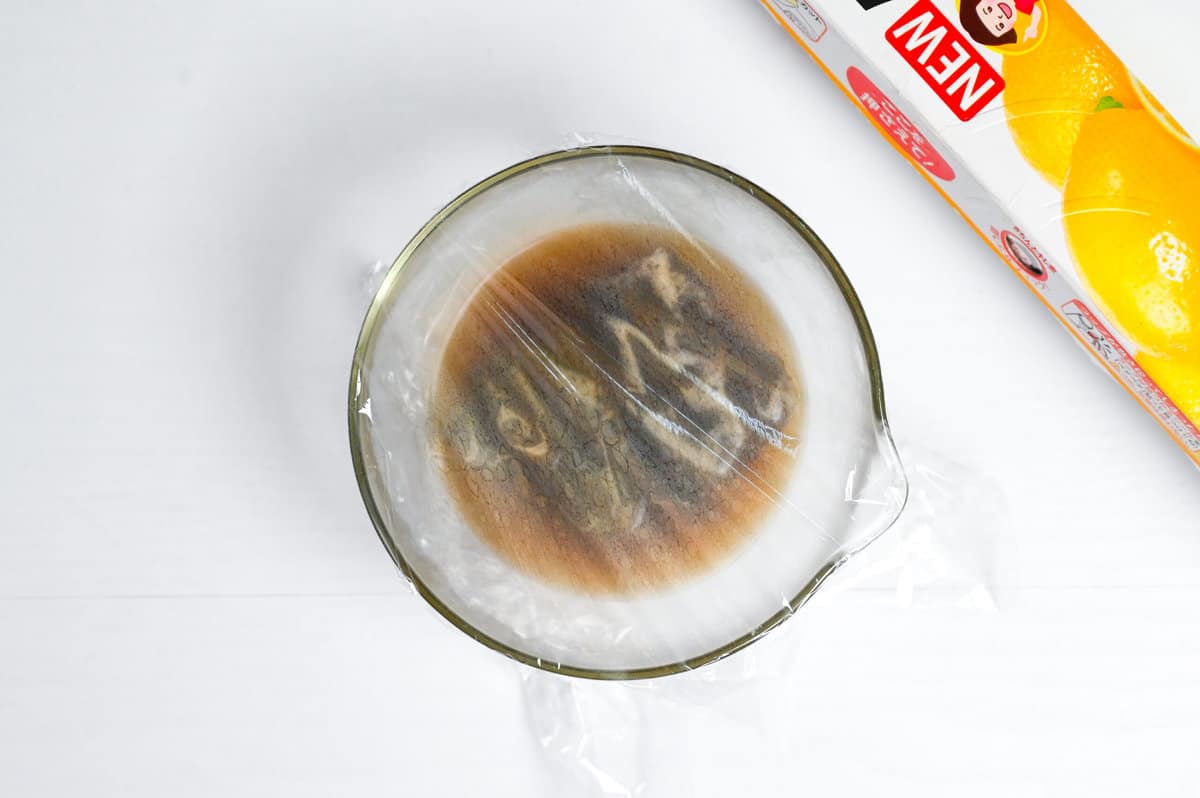
Remove the tea bags and squeeze thoroughly to ensure the tea is as concentrated as possible. If using loose tea, pour it through a tea strainer.
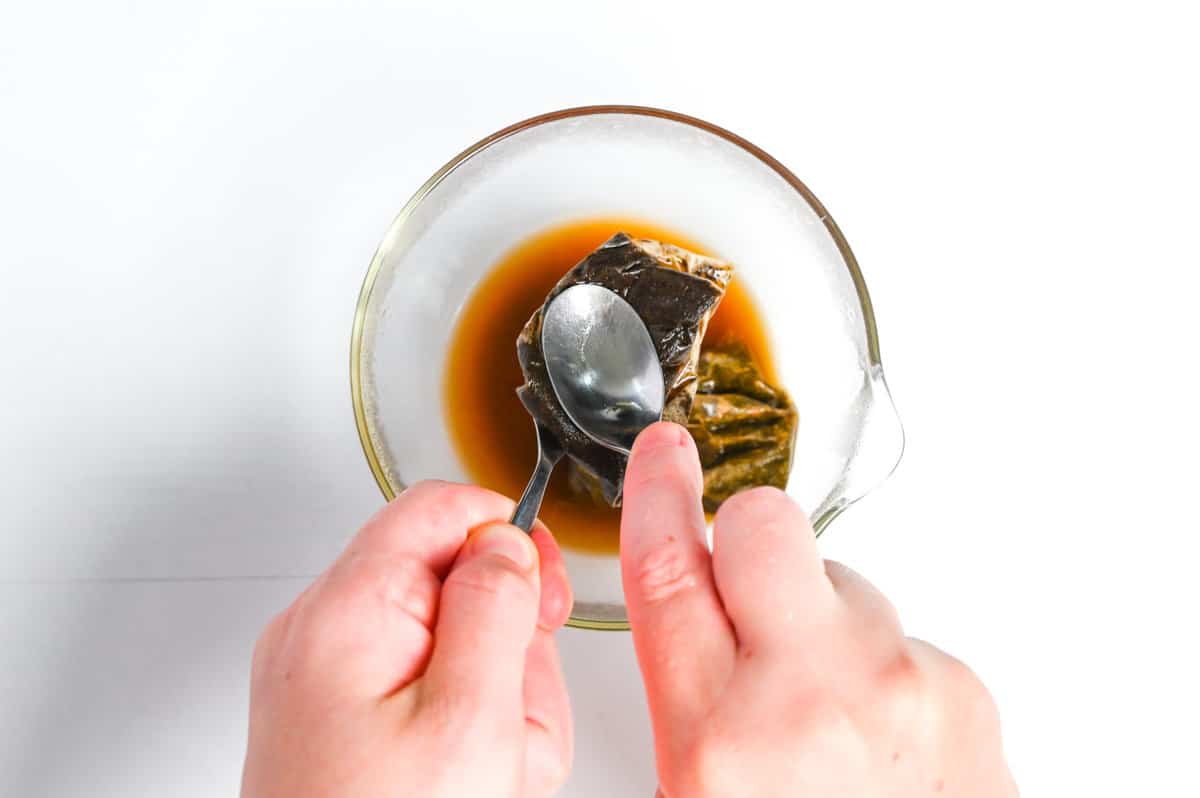
Fill a glass with ice one-third of the way up and pour the concentrated hojicha over the top.
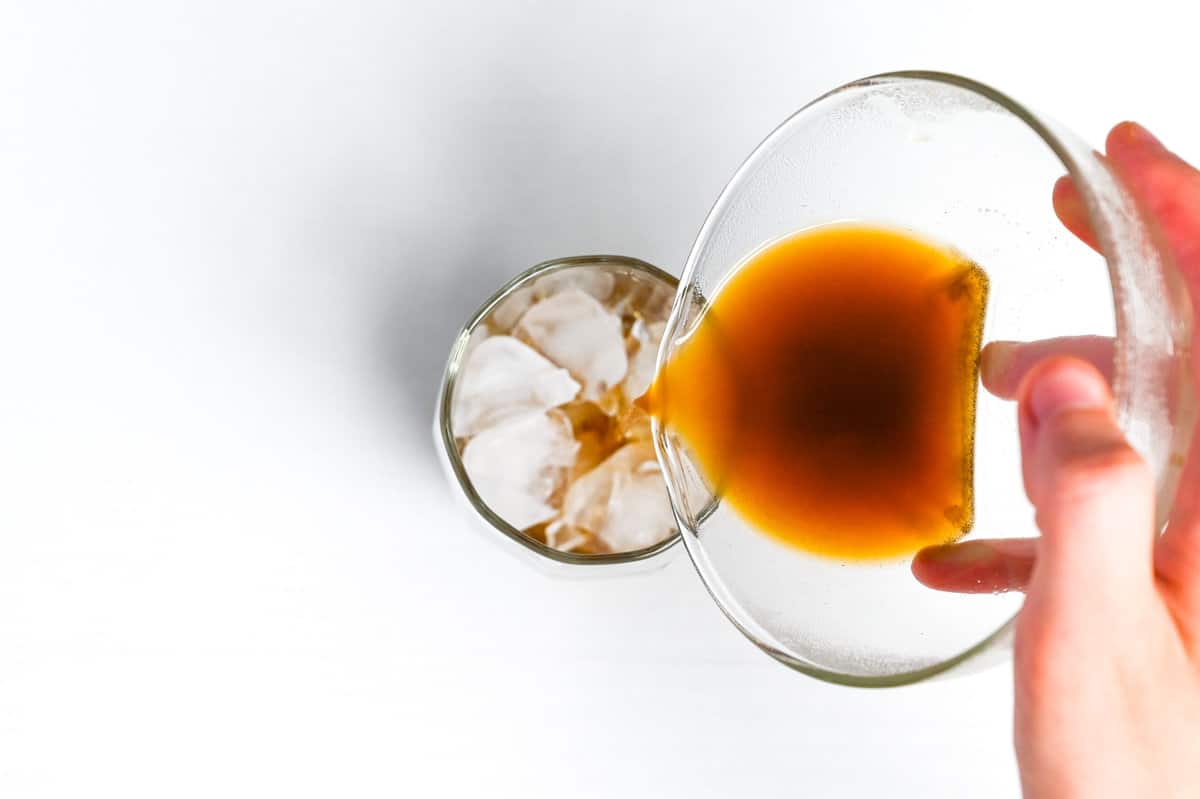
Top with your choice of milk.
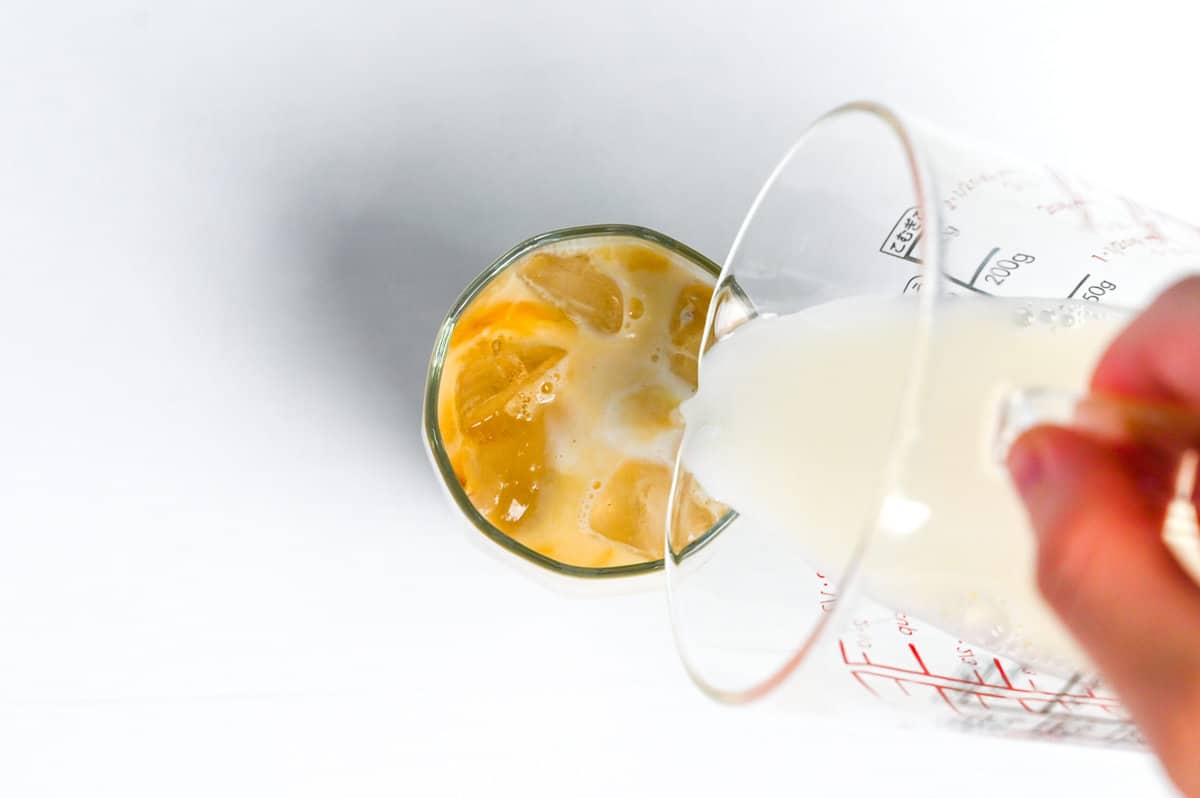
Tips & Tricks
- If using loose leaf tea, brew it loose and strain before adding it to the glass.
- Cover while steeping to keep the water hotter for longer.
- For a more intense hojicha flavor, mix the tea, water and sweetner in a jug, steep for 10 minutes and then add the milk. Continue to brew in the fridge for 1-2 hours, then remove the tea bags and pour over ice right before serving.
- If you don’t want the latte to be watered down, fry freezing cubes of milk or straight hojicha to add to your drink.
How to Store
If you decide to make a large batch, you can keep the concentrated hojicha mixture in an airtight container in the fridge for 1-2 days. I recommend leaving the teabag in so it can become stronger over time.
Once mixed with milk, it should be kept refrigerated and consumed within 24 hours.
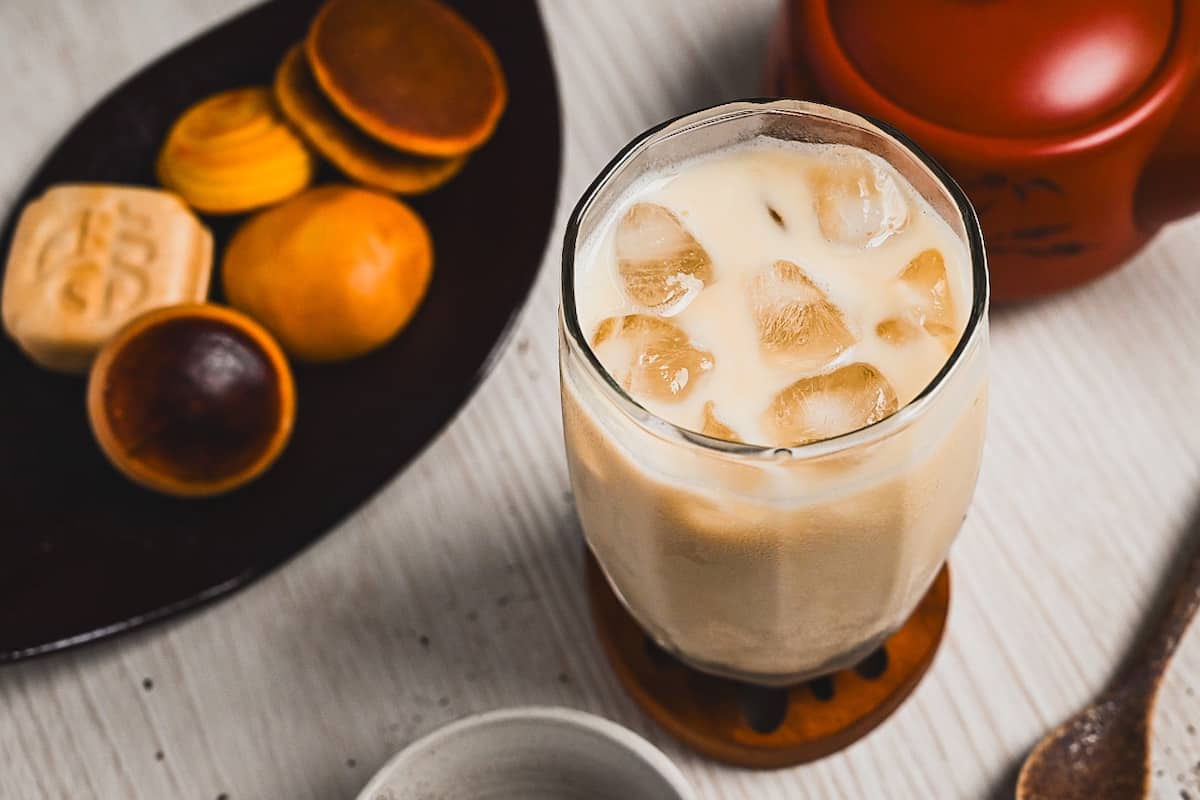
FAQ
Although no official records exist, it is believed that Hojicha was invented around the Showa Era (1926-1989) when tea merchants in Kyoto were struggling to sell enough tea during the Showa Depression. At the time, there were no tea preservation methods in place, and unsold tea would deteriorate quickly and have to be thrown away.
To tackle this problem, one tea merchant took his tea leaves to Kyoto University to consult with a professor. He left with the idea of drying and roasting the leaves and hojicha was born! Not only was it a hit with other tea merchants as a way to save their produce, but it became well loved amongst tea drinkers across Japan for its unique taste and comforting aroma.
Some people say that it actually existed in Japan earlier than this, but since there are no records, the true origin of hojicha remains a mystery.
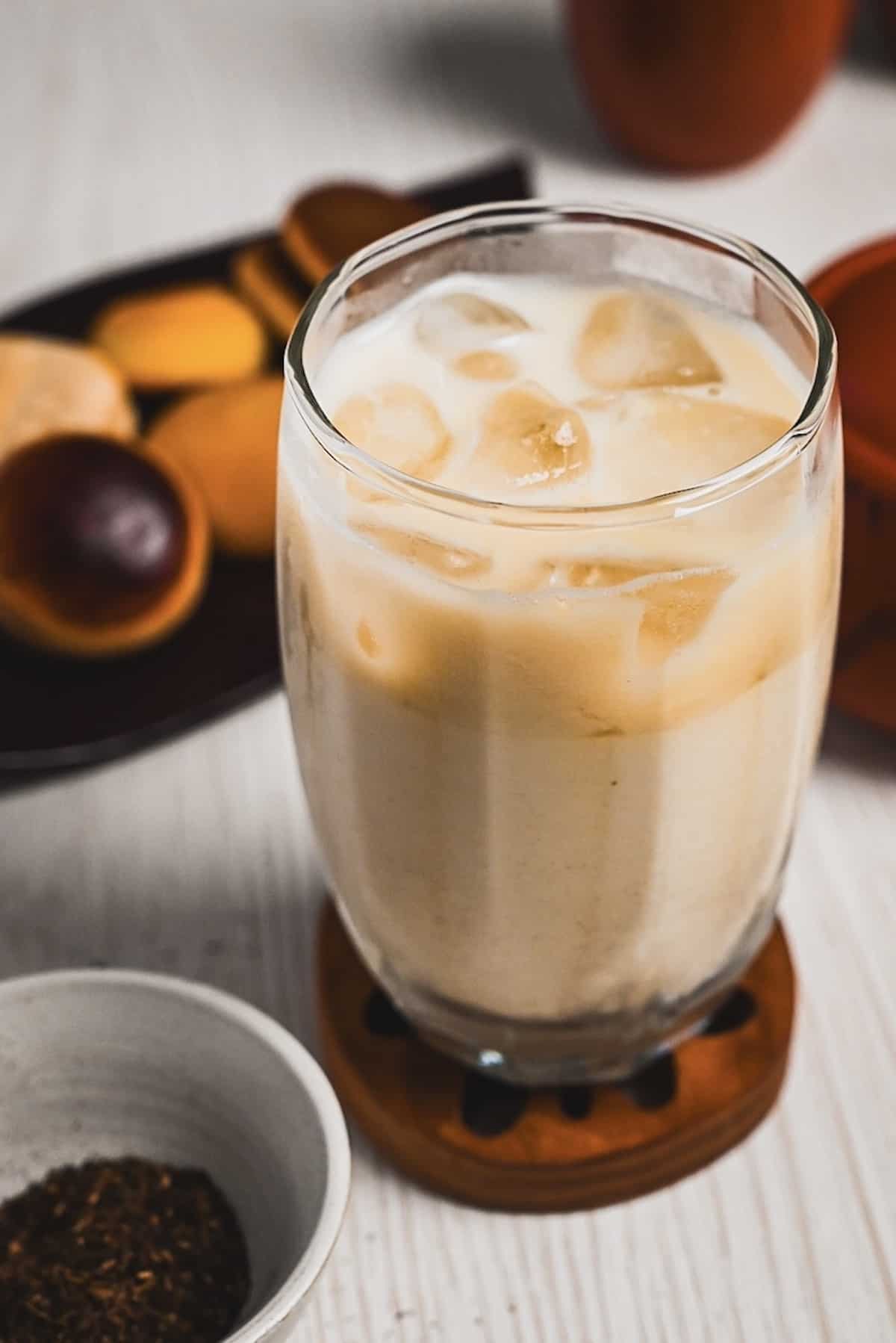
I hope you enjoy this Iced Hojicha Latte recipe! If you try it out, I’d really appreciate it if you could spare a moment to let me know what you thought by giving a review and star rating in the comments below. It’s also helpful to share any adjustments you made to the recipe with our other readers. Thank you!
More Japanese Drink Recipes
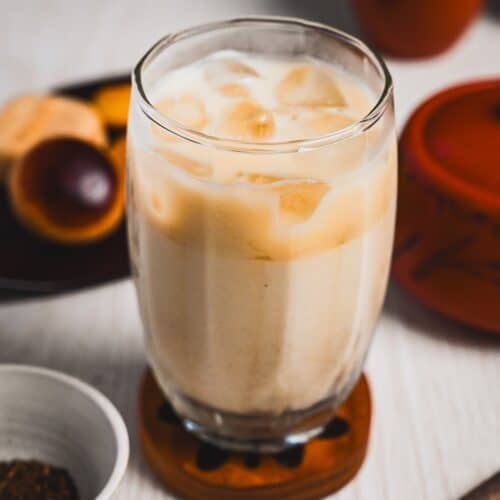
Iced Hojicha Latte (Roasted Green Tea Latte)
Ingredients
- 2 Hojicha tea bags 3g loose tea per bag
- 60 ml hot water 90°C / 195°F
- 2 tsp sweetener of your choice
- 120 ml milk of your choice
- ice cubes
Instructions
- First, boil your water and then allow it to cool to about 90°C or 195°F. In a small measuring jug, add 2 Hojicha tea bags and pour 60 ml hot water over them.

- Next 2 tsp sweetener of your choice and mix until dissolved.

- Cover and steep for 10 minutes.

- After 10 minutes, squeeze the tea bags thoroughly. (If using loose tea, strain using a tea strainer and press the leaves to save as much liquid as possible).

- Add ice cubes to a glass about one-third of the way up and pour the concentrated hojicha over the top.

- Top with 120 ml milk of your choice and stir well.

- Enjoy!

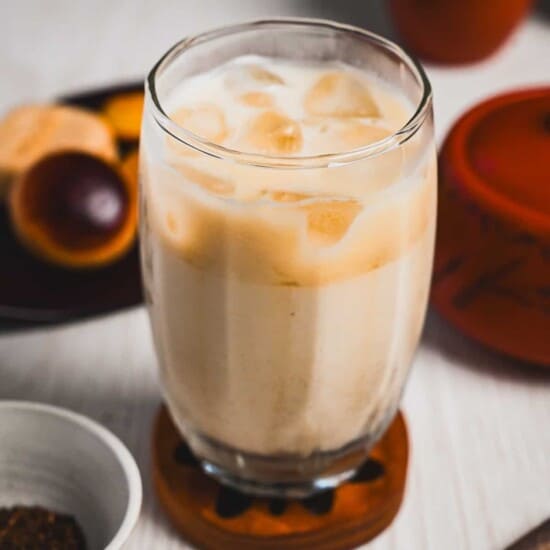


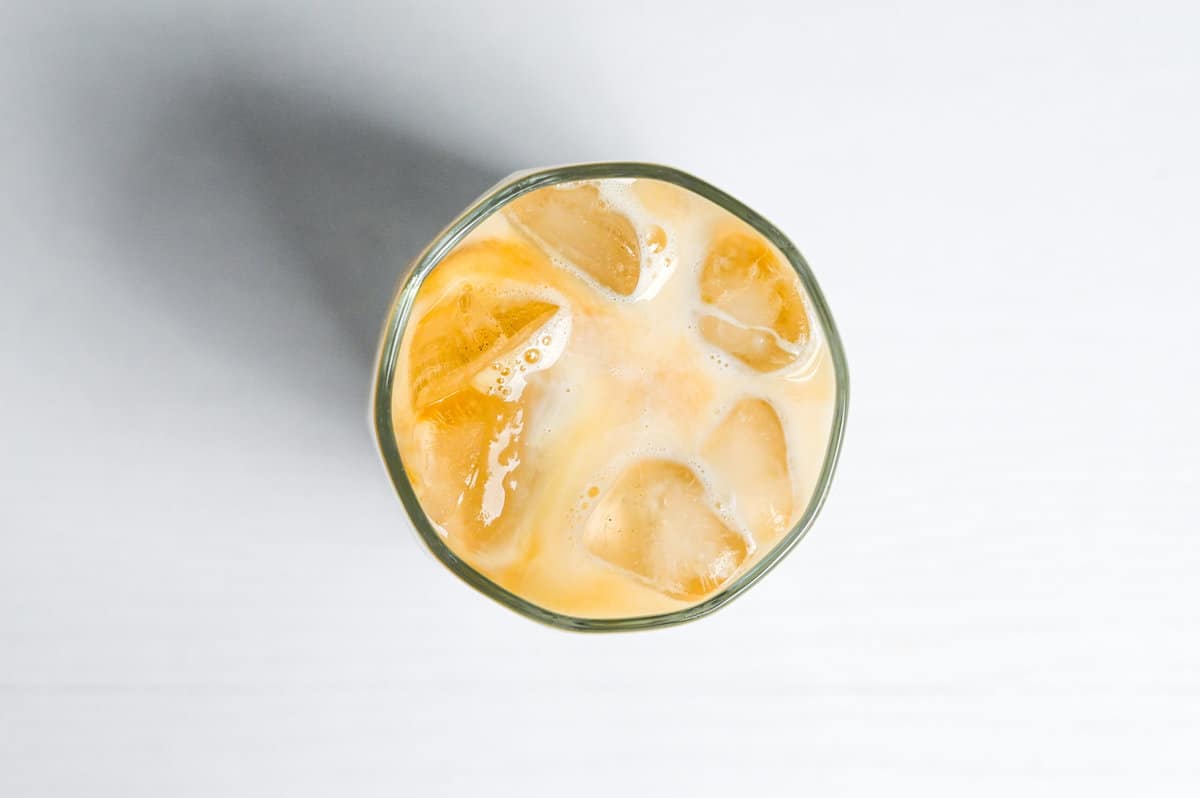
Leave a rating and a comment